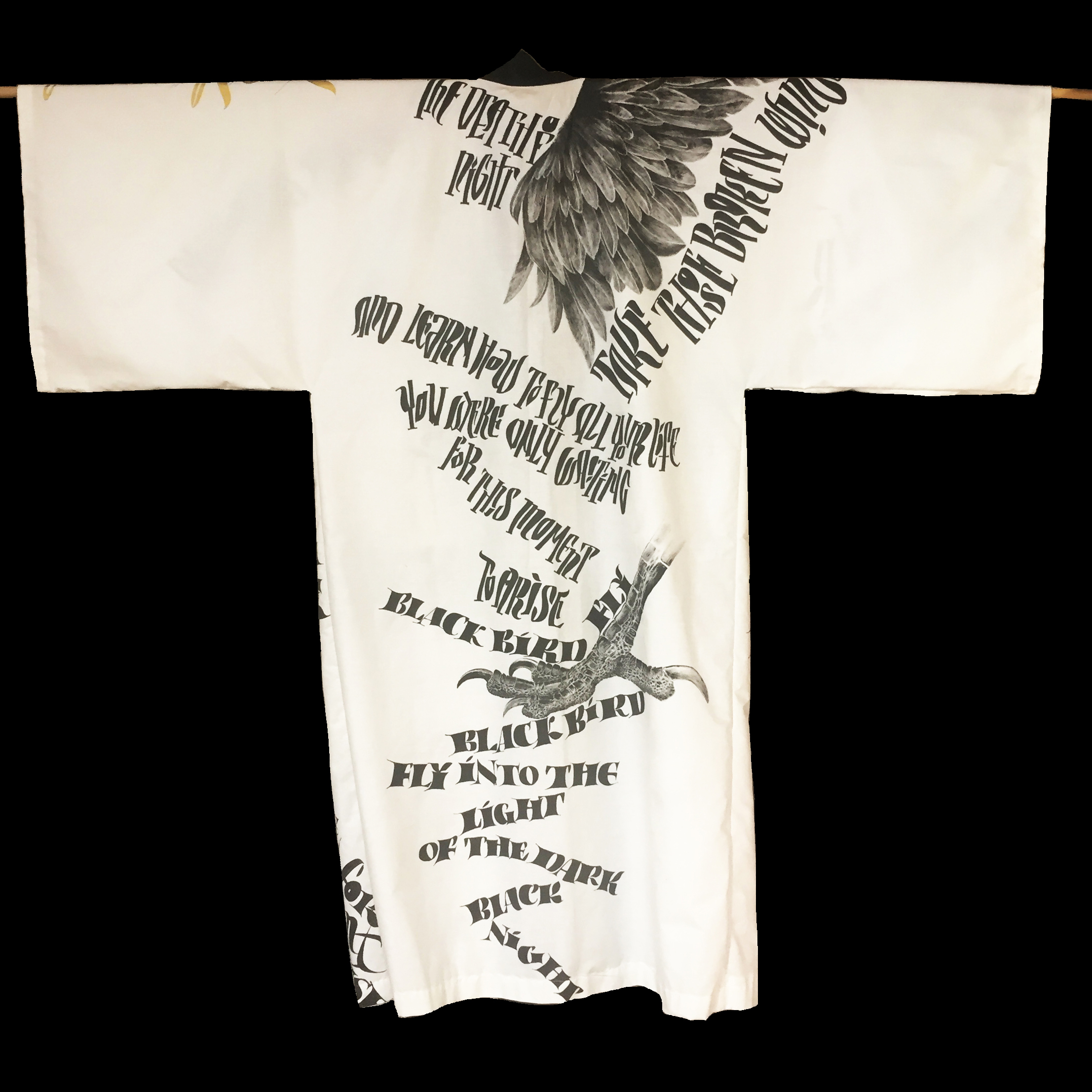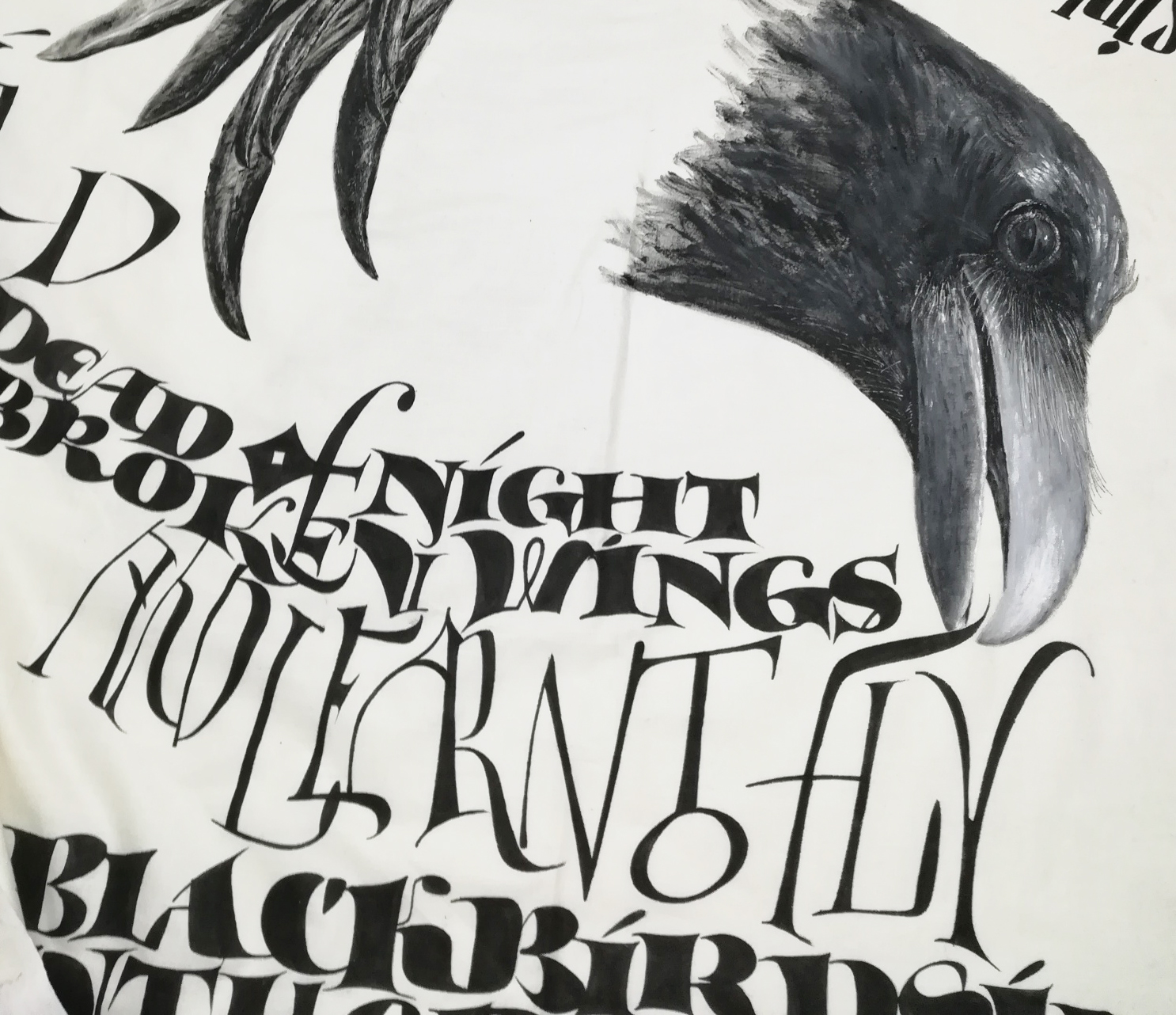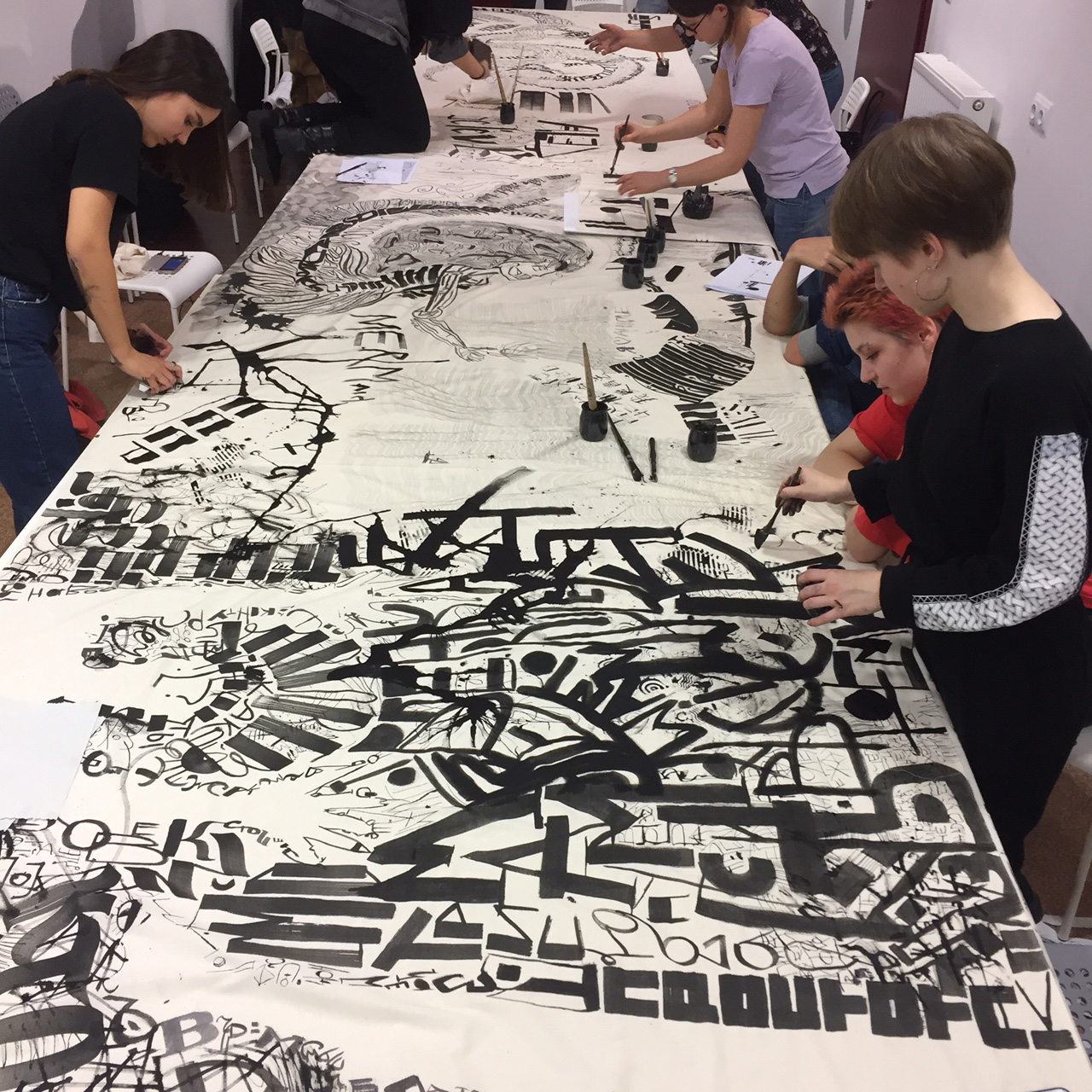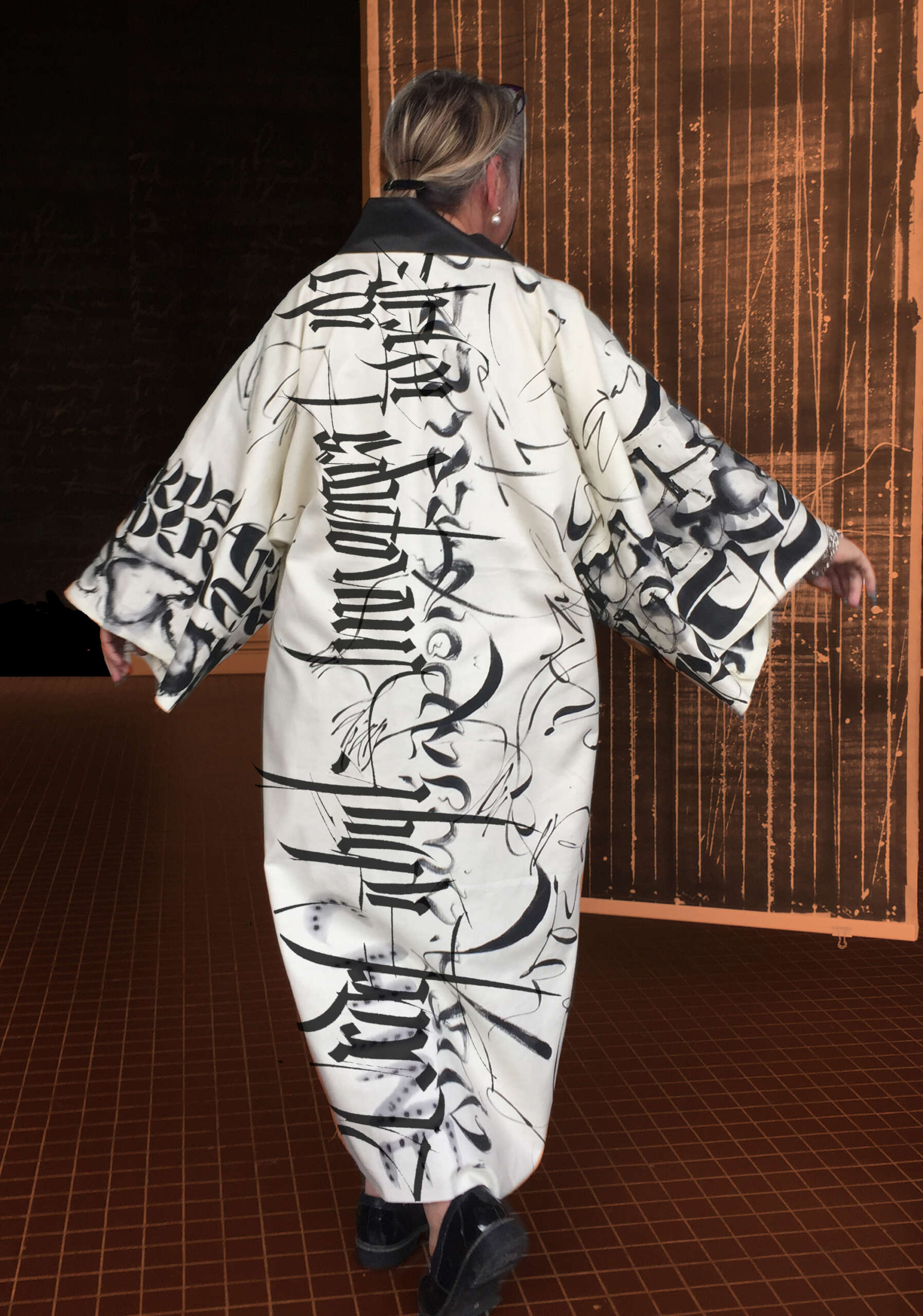All clothing is a social statement. So why not make it a social activity too? Here are the results of some fantastic collaborations with fellow calligraphers and students, showing the power of teamwork and the pleasure of creating art to wear.
The first kimono on this virtual catwalk was created by the marvelous Veerle Missiaen and myself. We were teaching a kimono workshop to our Bruges students as part of a series on “Working Big.” We thought it best to write our own kimono in the hope of keeping up with our talented students. I suggested the song “Blackbird” by the Beatles, thinking that the sleeves of a kimono resemble the wings of a bird. Veerle agreed immediately, saying it was one of her favorite songs.
I laid a piece of fine cotton out on our long dining room table and started to work on the front. Veerle, a screen printer, supplied textile paints that could be heat set to make a washable kimono. Textile paint has this (dis)advantage: you cannot work fast. It is thick, gooey and does not flow easily. On cloth you have to stroke and double stroke a line to make a clean, solid mark. This slows me down and helps me to create more interesting letterforms.
Veerle and I did not plan the design, but we did decide to do one side each. I wrote the first verses of the song in a descending diagonal, leaving the top third of the front empty. I thought an area of white would balance out the heavy letters below. The half-finished cloth then went to Veerle, who added the rest of the text and, to my surprise and delight, an incredibly beautiful and emotional painting of a blackbird that continues over the shoulder from the back to the top of the front. We both thought one more element was needed, so Veerle screen-printed a verse from the song in gold over the shoulder.
Now, I am a modern man, meaning I too can sew a bit – if my wife is there to sort out any problems! Sewing the basic shape is not too difficult, but adding the collar is a tricky maneuver. The vertical lines of black running up and around the neck tie the whole design together.
I have taught this process a couple of times. Here are photos of my students at the Japanese Polish Academy of Information Technology in Warsaw. Over three days (and three nights of sewing for me) each student completed her own kimono. We finished the workshop with a catwalk in the Asia Pacific Museum in Warsaw!
And finally, a lovely kimono made by my students in Le Mans. This was not the theme of the workshop, but I decided to stretch the cloth for one kimono out on a side table in the classroom anyway. Students were invited to add a bit of writing to the cloth when they needed a break from the heavy work of creating an artist’s journal. Here is the result, worn by the director of l’Herberie in Le Mans, where many wonderful calligraphy workshops are held.
I have a dream. Wouldn’t it be wonderful if Project Kimono were taken up by calligraphers all over the world? We could create magnificent clothing bearing messages of peace, goodwill, tolerance and respect for nature. We could have online catwalks. We could wear them to the supermarket (ok, maybe I’m not brave enough for that). Writing a kimono always ends in magic. When the flat cloth is sewn into shape and draped over the body, the flat writing is transformed into moving, flowing shapes.
I will be teaching this process online in April 2022. Please join me on www.brodyonline.com . You will finish the workshop with a masterpiece to wear!







Leave a Reply